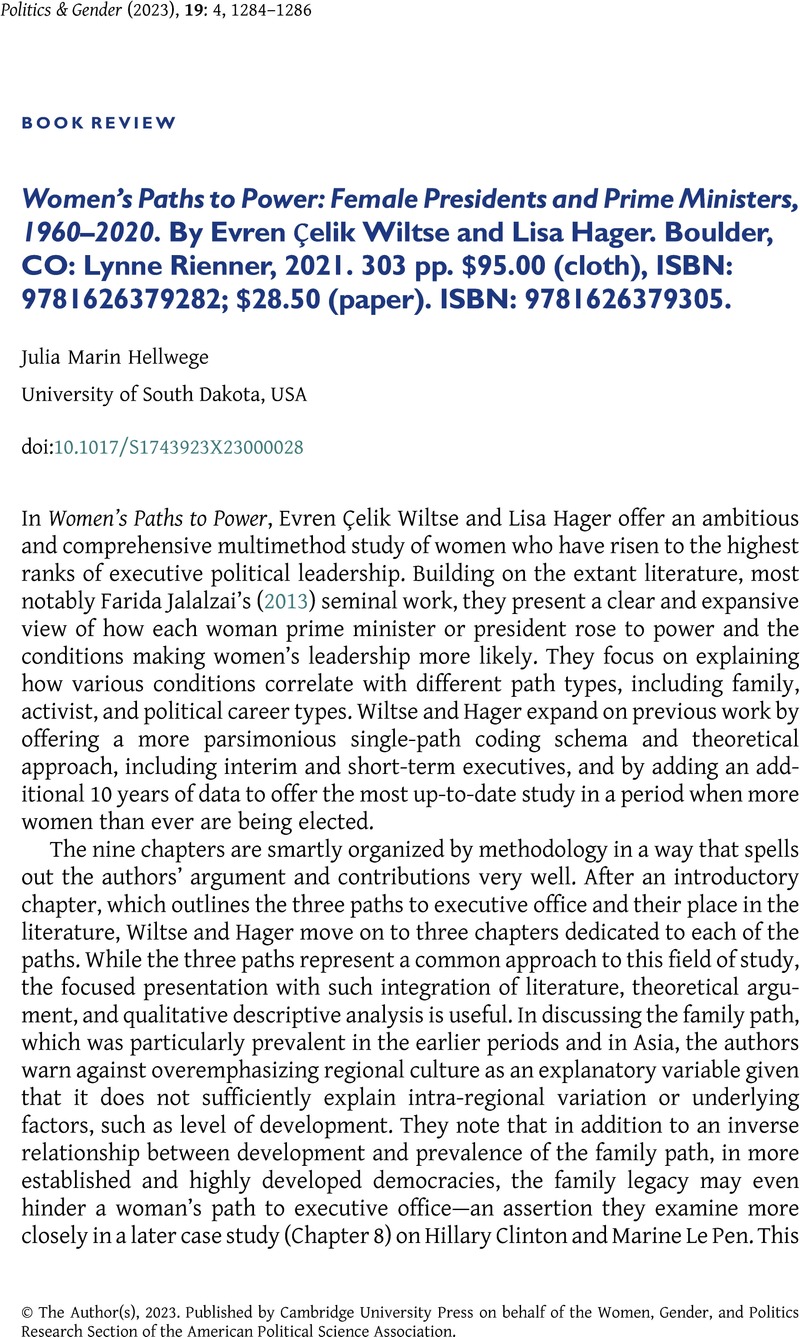No CrossRef data available.
Article contents
Women’s Paths to Power: Female Presidents and Prime Ministers, 1960–2020. By Evren Çelik Wiltse and Lisa Hager. Boulder, CO: Lynne Rienner, 2021. 303 pp. $95.00 (cloth), ISBN: 9781626379282; $28.50 (paper). ISBN: 9781626379305.
Review products
Women’s Paths to Power: Female Presidents and Prime Ministers, 1960–2020. By Evren Çelik Wiltse and Lisa Hager. Boulder, CO: Lynne Rienner, 2021. 303 pp. $95.00 (cloth), ISBN: 9781626379282; $28.50 (paper). ISBN: 9781626379305.
Published online by Cambridge University Press: 24 May 2023
Abstract
An abstract is not available for this content so a preview has been provided. Please use the Get access link above for information on how to access this content.

- Type
- Book Review
- Information
- Copyright
- © The Author(s), 2023. Published by Cambridge University Press on behalf of the Women, Gender, and Politics Research Section of the American Political Science Association
References
Jalalzai, Farida. 2013. Shattered, Cracked, or Firmly Intact? Women and the Executive Glass Ceiling Worldwide. New York: Oxford University Press.CrossRefGoogle Scholar


